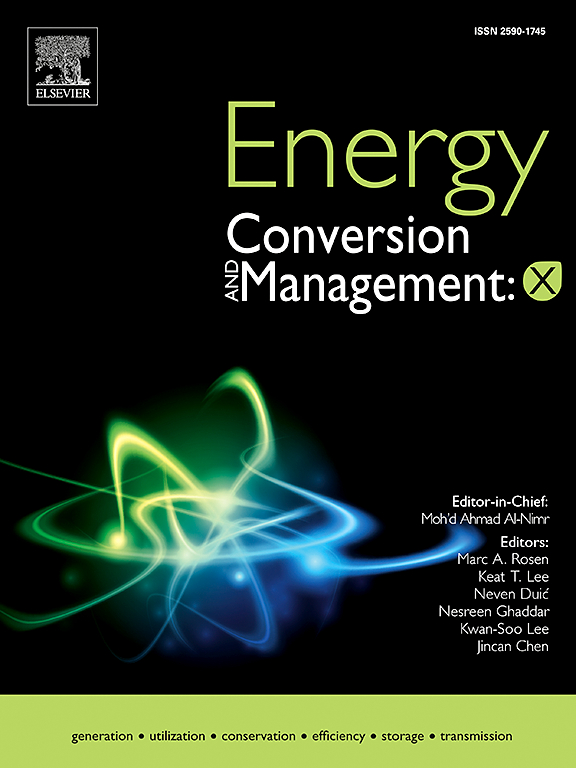Experimental proof of a thermal system for cooling and storage applications employing cacl2/silica gel composite adsorbent
IF 10.9
1区 工程技术
Q1 ENERGY & FUELS
引用次数: 0
Abstract
Sorption systems have been widely studied for cooling applications and as thermochemical energy storage devices for provision of heating and cooling, according to seasonal requirements. In the latest years, several researchers worked on the development of composite adsorbent materials for such kind of applications, but the vast majority of work is limited to material scale or small-scale devices. In the present paper, the experimental results on a lab-scale prototype of a sorption system are presented. Its main innovative features are the use of a composite made with silica gel and calcium chloride (CaCl2) (25 % wt. of salt inside the silica matrix) along with a patented method for evaporation/condensation, which makes usage of a porous structure directly inserted in the vacuum chamber with the heat exchanger and the storage material. Experimental tests were carried out considering both the possibility of using the system as a chiller and as a thermochemical storage. In chiller operation, average powers up to 6 kW were measured, and thermal energy storage capacity of 14 MJ (cooling storage operation) and 19 MJ (heat storage operation) were measured, thus indicating that the application of composite materials in large scale systems for real-world application is feasible and efficient.
采用cacl2/硅胶复合吸附剂的冷却和储存应用热系统的实验证明
吸附系统已被广泛研究用于冷却应用,并作为热化学能量储存装置,根据季节要求提供加热和冷却。近年来,一些研究人员致力于开发用于此类应用的复合吸附剂材料,但绝大多数工作仅限于材料规模或小型设备。本文介绍了在实验室规模的吸附系统原型上的实验结果。它的主要创新特点是使用了由硅胶和氯化钙(CaCl2)制成的复合材料(二氧化硅基体中含有25% wt的盐)以及蒸发/冷凝的专利方法,该方法利用了直接插入真空室的多孔结构,其中包括热交换器和存储材料。进行了实验测试,考虑了使用该系统作为冷却器和热化学储存的可能性。在制冷机运行中,测量了高达6 kW的平均功率,并测量了14 MJ(蓄冷运行)和19 MJ(蓄热运行)的蓄热能力,从而表明复合材料在实际应用中的大型系统中的应用是可行和高效的。
本文章由计算机程序翻译,如有差异,请以英文原文为准。
求助全文
约1分钟内获得全文
求助全文
来源期刊

Energy Conversion and Management
工程技术-力学
CiteScore
19.00
自引率
11.50%
发文量
1304
审稿时长
17 days
期刊介绍:
The journal Energy Conversion and Management provides a forum for publishing original contributions and comprehensive technical review articles of interdisciplinary and original research on all important energy topics.
The topics considered include energy generation, utilization, conversion, storage, transmission, conservation, management and sustainability. These topics typically involve various types of energy such as mechanical, thermal, nuclear, chemical, electromagnetic, magnetic and electric. These energy types cover all known energy resources, including renewable resources (e.g., solar, bio, hydro, wind, geothermal and ocean energy), fossil fuels and nuclear resources.
 求助内容:
求助内容: 应助结果提醒方式:
应助结果提醒方式:


